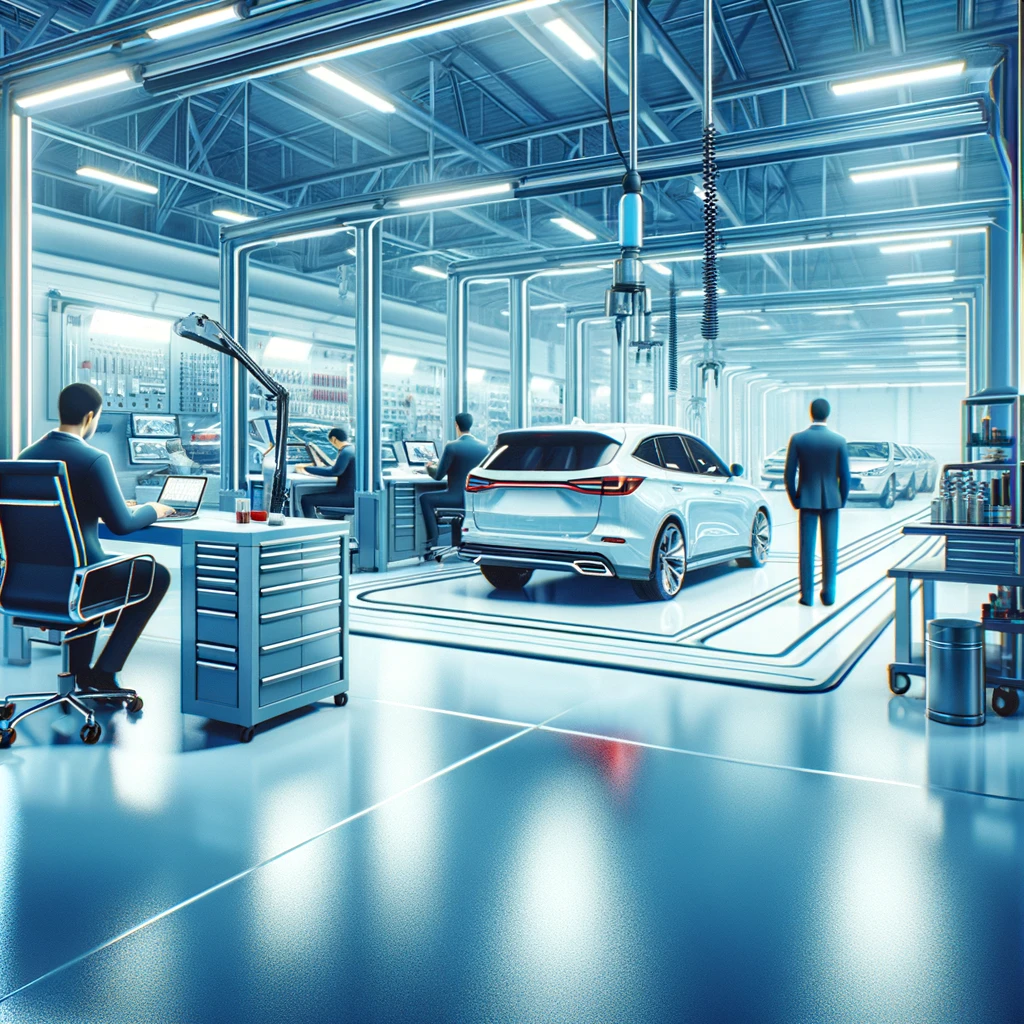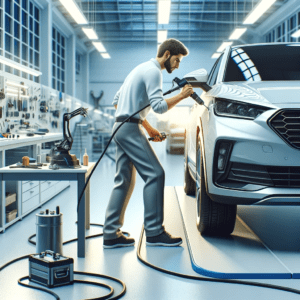
In a world where every second counts and efficiency dictates business success, Paintless Dent Repair – PDR has become a key component of the automotive industry. This method of dent repair, which requires no painting or filler, is not just an innovation in automotive service practices; it’s a revolutionary solution that transforms how insurance companies approach damage management and auto repairs.
Traditional repair methods can be laborious, expensive, and time-consuming, leading to increased costs for both car owners and insurance companies. In contrast, PDR offers a quicker, cheaper, and more environmentally friendly approach. But what exactly are the benefits for insurance companies in adopting PDR? The answer lies in a detailed analysis of the profitability and customer satisfaction that PDR can enhance.
This article aims to explore the economic and strategic advantages of choosing PDR for insurance companies, demonstrating through statistical data and real-life cases how this technique not only reduces costs but also enhances customer satisfaction and strengthens the relationship between insurers and their clients.
Economic Efficiency of PDR for Insurance Companies
The choice of car dent repair method has a direct impact on the balance sheets of insurance companies. Traditional methods, requiring filler and new paint, often lead to longer repair periods and thus higher labor and material costs. According to a study by the Automotive Management Network, PDR can reduce repair costs by up to 70% compared to traditional methods. This is because PDR requires fewer materials and less labor time.
Moreover, the repair time with PDR is typically much shorter. While a standard repair may take several days, PDR is often performed in a few hours. This means that cars are returned to customers much quicker, reducing inconvenience for them and the costs of car rentals, which are often covered by insurance policies. The United States Bureau of Transportation Statistics reports that the average repair time for a car after a minor accident is 12 days. With PDR, this period can be reduced to 1-2 days.
Furthermore, choosing PDR has a positive effect on the car’s value post-repair. When a car undergoes traditional repair, its value often decreases due to the inevitable traces of repair, even when professionally done. With PDR, the car retains its original paint and material, which helps maintain a higher resale value.
Considering these factors, it’s no surprise that more and more insurance companies prefer services that offer PDR. This leads to better cost control and improved financial outcomes.
PDR (Paintless Dent Repair) and Customer Satisfaction


Customer satisfaction is a top priority for any service, but in the insurance sector, where trust and loyalty are fundamental pillars of relationships, it’s especially crucial. Clients expect not just compensation for damages, but an efficient and hassle-free repair process. Here, Paintless Dent Repair (PDR) stands out as a method offering both speed and quality, significantly enhancing customer satisfaction.
According to a JD Power study, repair time is one of the main factors influencing customer satisfaction after an automotive incident. PDR meets this requirement by providing solutions often within a single workday, considerably faster compared to traditional repair processes. Such speed not only saves clients’ time but also contributes to their overall impression of the insurer’s efficiency and reliability.
Another critical aspect is the quality of the repair. PDR allows restoring cars to their original shape without any signs of intervention. This is particularly important for clients with new or high-end cars, for whom maintaining aesthetics is essential. Restoring the car to its original state without visible signs of repair increases satisfaction and helps maintain the vehicle’s high value.
Finally, one of the strengths of PDR is its ability to minimize the negative environmental impact of repair works. Modern customers are increasingly attentive to the ecological practices of companies they interact with. As PDR does not require painting or other chemicals, it is significantly more environmentally friendly compared to traditional methods. This aspect can contribute to the positive image of the insurance company and strengthen its social responsibility.
Overall, enhancing customer satisfaction through the speed, quality of repair, and the ecological aspect of PDR is a valuable asset for insurance companies. It not only increases the chances of policy renewals but also stimulates positive reviews and recommendations, crucial for attracting new clients.
Case Studies and Statistics
To underscore the importance of PDR in the insurance sector, let’s look at concrete examples and data. According to a report by ‘The Dent Guys’, after introducing PDR, a major insurance company recorded a 40% reduction in hail damage repair costs. This decrease is due to the transition from traditional repair, which included a complete repaint, to PDR, allowing the preservation of the original paint and thus the vehicles’ value.
In another case, a European insurance company observed a 15% increase in customer satisfaction after introducing PDR as a preferred repair method. Clients expressed greater satisfaction with the speed and quality of the repair, as well as the preservation of their cars’ authenticity.
Beyond specific case studies, it’s important to note statistical trends. According to a ‘Market Insights’ study, forecasts indicate that the PDR market will grow by 7% annually over the next five years, with this growth driven by the technology’s adoption by insurance companies and repair shops. This underlines the potential for growth and operational optimization in the insurance sector.
These data support the argument that PDR not only increases economic efficiency but also enhances customer satisfaction, ultimately leading to greater loyalty and growth in the insurance sector.
Challenges and Limitations of Using the PDR (Paintless Dent Repair) Method


Despite the obvious advantages of PDR (Paintless Dent Repair), it’s essential to also consider the potential challenges and limitations of this method. Sometimes, PDR may not be suitable for all types of damage, particularly for deep dents or when the paint is damaged. In such cases, traditional repair methods may offer more satisfactory results.
Insurance companies also need to be cautious in managing client expectations regarding PDR. While many clients may be attracted by the method’s speed and reduced cost, clear communication about the technology’s limitations is crucial to avoid any disappointment.
One of the main challenges is educating both clients and the insurance companies’ agents themselves. Not all clients are familiar with PDR and its benefits, so insurers need to invest in training and information campaigns. This includes educating agents about the benefits and limitations of PDR, so they can provide accurate information and guide clients toward the best repair options.
Furthermore, insurers must collaborate with quality services specialized in PDR to ensure that clients receive high-quality services. Choosing the right partners is crucial, as the skills and experience of the technicians directly affect the final outcome.
Despite these challenges, the potential of PDR to improve operations and increase profitability for insurance companies is undeniable. With proper management and strategy, PDR can continue to be an important tool for the insurance sector.
Conclusion
From cost-effective repairs to improving customer satisfaction and retention – the benefits are numerous and significant. While there are certain limitations and challenges, it is clear that PDR offers significant strategic advantages.
Insurance companies that adopt and integrate PDR are moving towards a more sustainable and customer-focused business model. Over time, these businesses can expect to strengthen their relationships with clients, increase loyalty, and expand their market share.
In the long term, adapting to PDR and similar innovations will be crucial for the survival and prosperity of insurance companies in an increasingly dynamic and competitive market. Companies that successfully integrate these technologies and present them correctly to their clients will position themselves as industry leaders, ready to meet the needs of the modern consumer.
Call to Action
Armed with information and knowledge about the benefits of PDR, insurance companies should actively consider integrating this method into their operations. They need to engage with quality services, train their staff, and inform their clients about the advantages of PDR. Thus, with a strategic plan and a clear vision for the future, they can make PDR a key element of their value proposition and continue to chart a successful path in the automotive insurance sector.



